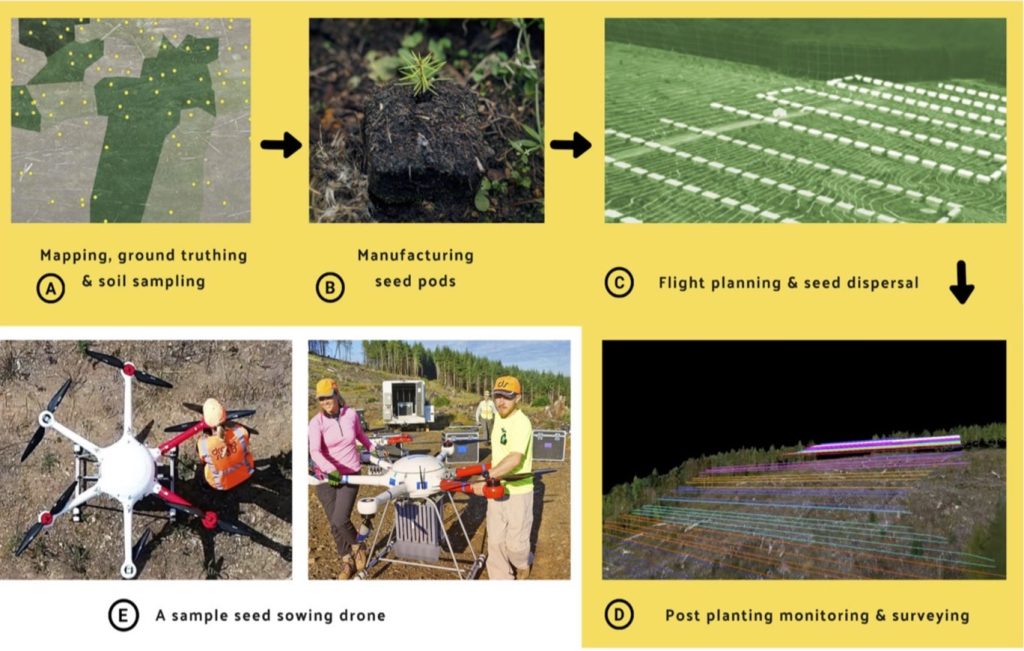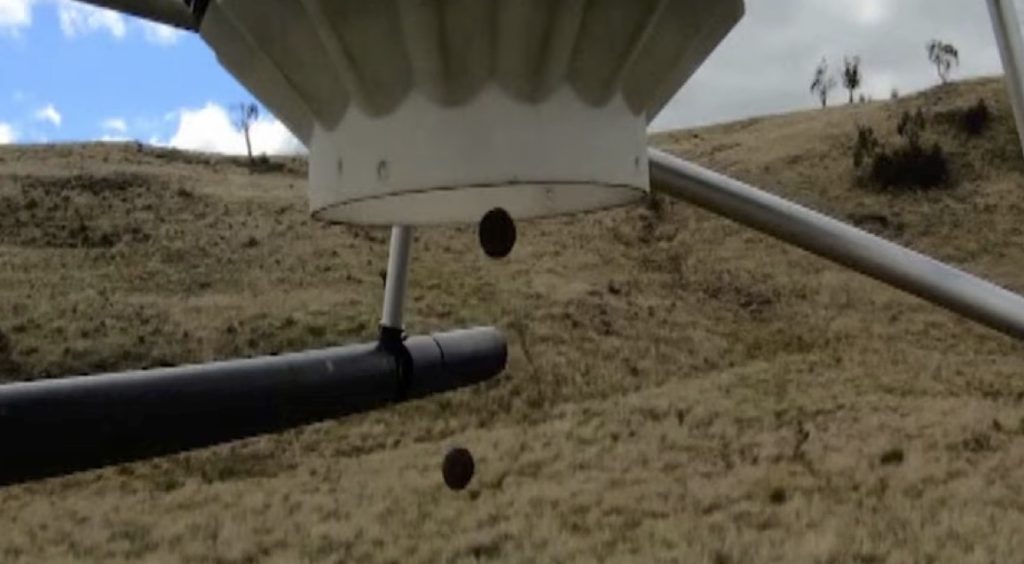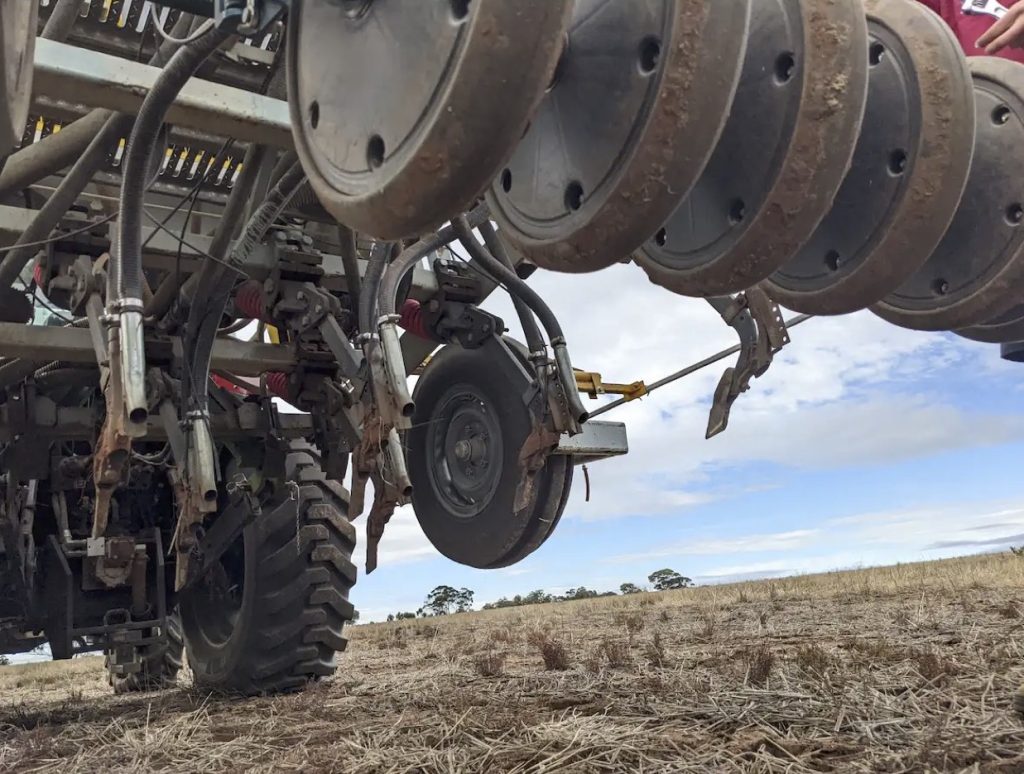Aerial seeding is not a new idea. It was apparently originally used in the 1920s in the United States and has been used in many other places, including Australia, for decades. The 21st-century version of aerial seeding is drone seeding and there has been a flurry of activity worldwide from people trying to successfully commercialise the technology.
Aircraft have long been used in agriculture for various purposes, including mapping and surveying land, soil analysis using remote sensing, monitoring crop health, irrigation and livestock, spraying crops and aerial seeding. Two of the main reasons for using aircraft are that they can cover large areas quickly and are not restricted by difficult terrain to the extent ground-based methods are.
Aerial seeding has been used in a variety of contexts from regenerating harvested
native forests, sowing pasture grasses onto land being rested from cereal crops to prevent soil erosion and improve soil health and attempting to reverse desertification by sowing tree seeds. Clear information on how successful these efforts have been in achieving their aims is hard to find.
Drones, with their low upfront cost, low running costs and versatility, are now being used successfully and cost-effectively in agriculture for some of the purposes mentioned above previously carried out by planes. With the strong impetus for reforestation now for mitigating climate change, proponents of drone technology are emphasising the potential advantages of using drones for aerial seeding so that the massive number of trees that needs to be planted can be achieved.
The idea of using drones for aerial seeding seems to have been hatched by two engineers, Susan Graham and Lauren Fletcher, around 2015 and was based on the versatility of drones. They imagined the revegetation process beginning with drones aerially mapping the site to be revegetated, this mapping then being used to develop a planting pattern which could be programmed into drones, which in turn were used to drop seeds, specially treated with a nutrient rich gel to promote germination, in specific locations. Based on this multi-functional drone concept, Graham and Fletcher then went on to try to commercialise the idea. There has been no shortage of takers!

Despite the great interest in and hype around using drones for aerial seeding in revegetation, there is little information yet about the survival rate of the seeds they drop. Seeds dropped by drones, not surprisingly, face a range of threats, which are similar to those faced by seeds planted by ground‑based methods: being blown by wind or eaten by animals, falling onto ground with poor tilth and, even if germinating, failing to find enough moisture, being out-competed by weeds or again being eaten by animals.
To try and maximise chances of germination, at least, research has gone into improving the soil penetration of seeds dropped by drones. One result is the “E‑seed”, a self-burying seed carrier
Pedrini and his co-authors consider the E-seed a clever but impractical solution, given the billions of seeds needed to restore ecosystems.
Another variation, developed by an Australian company, AirSeed, is the “seed pod”, which is a seed and nutrient mixture combined with a protective coating and is dropped by drones. AirSeed claims its drones, using Graham and Fletcher’s approach, can drop up to 40,000 seeds per day, resulting in substantial cost savings. This technology is being trialled at the Australian Botanic Garden at Mt Annan in southern Sydney in a project led by Western Sydney University. There is no independent evidence about the success rate of AirSeed’s technology but the results of this study, which is in its closing stages, should provide some interesting reading. Another group of researchers has reviewed aerial seeding methods generally and, while recognising the specific limitations of both traditional revegetation methods and novel aerial seeding methods, has suggested some overall improvements to aerial seeding methods.
Pedrini and his co-authors welcome any improvements to revegetation techniques used in ecological restoration. However, they emphasise that we know the success rate of ground-based techniques and know what to expect for our money. New technologies, which clearly need funding to be properly trialled and evaluated, should not, they say, siphon funding away from ecological restoration projects using currently accepted methods. The new, shiny technologies need to prove their worth first. Pedrini and his group make the point that ecological restoration is a very complex process that is unlikely to be revolutionised by novel technologies and, in the face of climate change and deforestation, we need to continue restoration efforts using the most effective methods available.


Pedrini, Gutiérrez and Dixon, Drone seeding and E-seeds sound exciting, but ecosystem restoration needs practical solutions, The Conversation, 1 May, 2023
